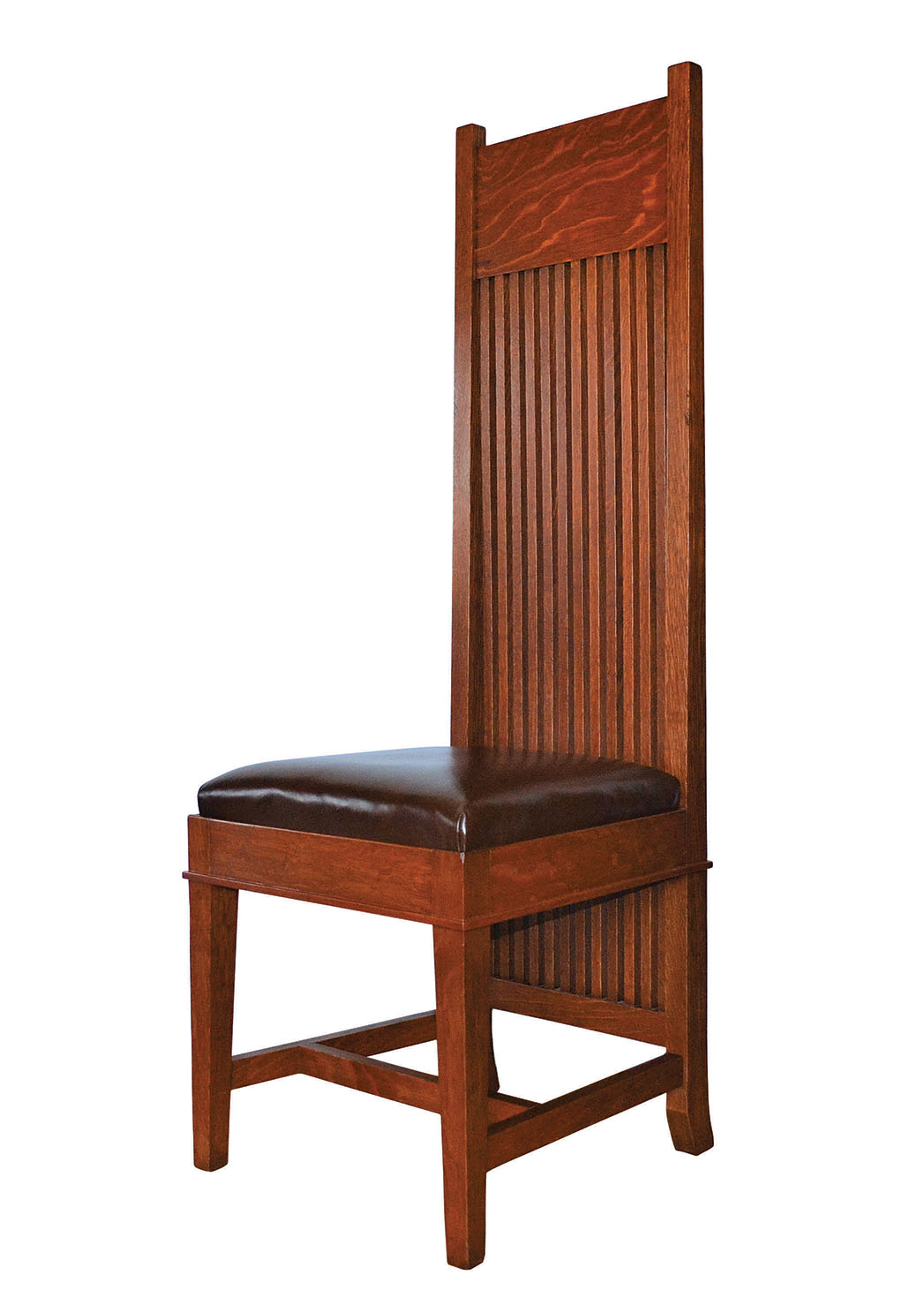Item Composition
Furniture
Item Medium
Furniture; Wood
Item Origin
Chicago, Illinois
Item Duration at Mansion
Temporary
Summary
Oak, 51 × 18½ × 17½ inches. Collection of Dana-Thomas House State Historic Site, Illinois Department of Natural Resources
Item Composition
Furniture
Item Medium
Furniture; Wood
Item Origin
Chicago, Illinois
Item Duration at Mansion
Temporary
When Chicago architect Frank Lloyd Wright designed this straight-backed oak chair for the dining room of Susan Lawrence Dana's new Springfield house in 1902–04, dining in upper-class homes was a formal affair. Most women wore rigid corsets, and an upright posture at the dinner table was the expected etiquette. When placed around the dining table, the chairs' tall backs of vertical square slats created an airy screen, invoking a sense of privacy that encouraged conversation.
Susan Lawrence Dana (1862–1946) was a widowed heiress with a flamboyant personality who loved to entertain. Recognizing a kindred spirit, Wright worked with her and a dream budget to design and build one of his largest and most ambitious Prairie-style houses. Evoking the native prairie landscape of the Midwest, the principles of its design were strong horizontal lines, flat or hipped roofs with broad overhanging eaves, windows grouped in horizontal bands, integration with the landscape, and discipline in the use of ornament.
Wright preferred built-in furniture for his structures, as a means of controlling the total interior scheme. Tables, cabinets, desks, and other case pieces exhibited "carefully calculated horizontality," recalling the extended cantilevers of the exterior roofs. Movable pieces were designed for a specific location to create a balanced and unified composition. For the Dana House, Wright designed three similar tables that could be placed together for seating large groups in the dining room. Each table included supports that would slide out from under the tabletop to hold extra leaves. The home was renamed the Dana-Thomas House to honor Mr. and Mrs. Charles C. Thomas, a successful medical publisher and his wife, who purchased the house in 1944 and were dedicated to its preservation over the 36 years that they owned it.
While carefully assembled and finished by hand, Wright's designs for the Dana furniture took advantage of the absolutely straight lines made possible by modern woodworking machinery. To bring out "the nature of the materials"—in this case the grain of seasoned oak—Wright specified that furniture be stained rather than varnished. Construction details were rarely visible, and each element was finished with equal care, so that the pieces could be admired in the round. Indeed, Wright's furniture, exemplified by that completed for Susan Lawrence Dana, can be regarded as architectural sculpture rather than merely utilitarian objects—part of a thoughtfully considered larger sculptural whole.
Acquired from the Thomas family by the State of Illinois in 1981, it is now an Illinois State Historic Site, a National Historic Landmark on the Register of National Historic Places, and open to the public as the Dana-Thomas House. It retains much of its original furniture, art glass, and decorative light fixtures, in fact, housing the largest and best-preserved collection of site-specific Wright objects.
Item Composition
Furniture
Item Medium
Furniture; Wood
Item Origin
Chicago, Illinois
Item Duration at Mansion
Temporary


